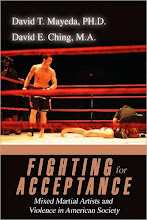 It may seem odd to be writing a review of a documentary released back in 1994, which covers a team from 1990. However, I've found that PBS Frontline's documentary, In the Game, is still one of the best teaching tools out there that exemplifies how gender inequality manifests in society. At the same time, this documentary is an uplifting, positive story that will not leave students hanging their heads, depressed upon walking out of class.
It may seem odd to be writing a review of a documentary released back in 1994, which covers a team from 1990. However, I've found that PBS Frontline's documentary, In the Game, is still one of the best teaching tools out there that exemplifies how gender inequality manifests in society. At the same time, this documentary is an uplifting, positive story that will not leave students hanging their heads, depressed upon walking out of class.The documentary follows Stanford's 1990 women's basketball team in their pursuit for an NCAA Division I National Championship. Their head coach, Tara VanDerveer has assembled an all-star group of athletes, many of whom are now seniors, including Jennifer Azzi, the documentary's central figure.
Throughout the course of In the Game, the documentary presents excellent examples of gender socialization, perceived deviance, limits to upward mobility, pay inequities, and of course it shows the benefits of Title IX. Last week I showed this documentary to my Intro to Sociology class, and despite the fact that In the Game's story is nearly 20 years old, it was still extremely well received by the students.
A male athlete in the class stated that he was engaged by it because he felt connected to the players and wanted to see if they would achieve their season's goal. A number of female students who played sports in high school but not college said they could identify with the players who were challenging gender role expectations as they pursued their athletic goals.
A non-traditional female student who had never played sports said she identified with the story since she grew up in the Title IX era and currently feels the same forms of resistance in the military that the female athletes/coaches described. A male student (not an athlete) commented that the story was inspiring and showed how much harder women had to work in order to receive equal treatment from the fans and athletic department.
Additionally, I feel the documentary illustrates the benefits people can gain through sports -- learning about teamwork, building confidence in multiple areas of life, learning how to bounce back from failures/disappointments, taking direction and constructive criticism, gaining discipline, etc. If girls are steered away from sports, then they are steered away from a major social institution in society that if run properly, can be extremely helpful in life.
Finally, indirectly, In the Game shows the benefits of affirmative action, which is exactly what Title IX is -- a government mandated intervention that calls for educational institutions to make serious progress towards gender equity in all facets of education; it seeks (at least in theory) to do away with educational gender discrimination by leveling out opportunity in law schools, med schools, athletics, and so on. In turn, it significantly alters society's cultural attitudes toward's women/girls in sports.
The only tidbit I feel the documentary missed was when it discussed briefly how women's collegiate basketball was outlawed in the early 1900s in order to "protect" women's health; the narrator should have stated specifically that "protecting women's health" meant making sure they did not damage their reproductive organs, showcasing how women were valued as mothers and confined to the domestic sphere. The documentary also illustrates "co-option," or women essentially entering a male-oriented sphere in greater numbers without truly changing the system.
Unfortunately, the documentary can no longer be ordered through FRONTLINE (the copyright has expired), but try locating the VHS copy in your school library. I cannot say enough good things about In the Game. And here's where the "protagonist," Jennifer Azzi ended up. You go girl!









Interesting.. Very interesting. I never knew about this book before. Thanks for sharing. Anyway, if you have time, take a visit to my Free Games website.
ReplyDeleteThis documentary sounds great, and I am trying to track down a copy to use in my 12th grade Sociology class. It seems impossible to find - any suggestions?
ReplyDelete